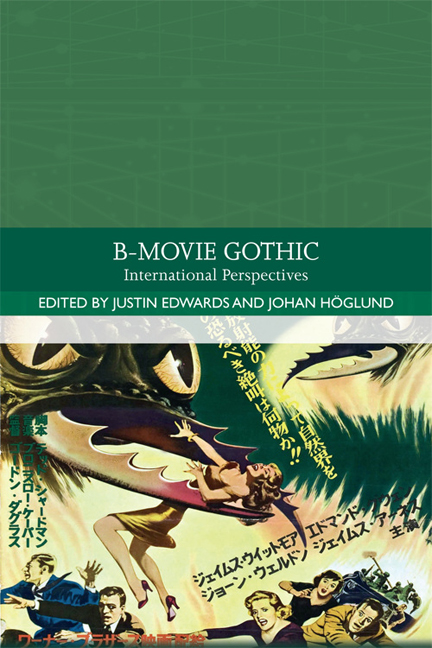11 - Psychopaths and Gothic Lolitas: Japanese B-Movie Gothic in Gen Takahashi’s Goth: Love and Death and Go Ohara’s Gothic & Lolita Psycho
Published online by Cambridge University Press: 06 May 2021
Summary
INTRODUCTION
Since the pillaging of Rome by a combination of Scandinavian and Eastern European warriors (a.k.a. ‘the Goths’) in the fifth century CE, the ‘Gothic’ has proven to be a very flexible term infused with a plethora of seemingly contradictory connotations. As Richard Davenport-Hines writes, the ‘Gothic has always had the versatility to provide imagery to express the anxieties of historical epochs. It has provided fantasies of dystopia – invoking terror, mystery, despair, malignity, human puniness and isolation – which since the seventeenth century have gratified, distressed, or chilled consumers of paintings, ornaments, buildings, literature, cinema, and clothes’ (Davenport-Hines 2000, 1). Invested with multiple paradoxical implications, Gothic art and sentiments have long provided an array of challenges for critics across numerous academic disciplines.
Whereas many critical and popular studies have explored the Western Gothic in its multiple iterations, very few works have sought to explore what might constitute a Japanese Gothic in either a cultural or a cinematic context. Undoubtedly, this lack of sustained scholarship stems from the fact that, in Japan, the term ‘Gothic’ (goshikku) does not carry the same semantic weight or cultural significance as it does in the Western European tradition. This is due to several factors, not the least of which arise from Japan's geographical and historical remove from Rome, medieval Christianity, and the immediate socio-historical influences of Western aesthetic and literary Romanticism. It is perhaps not surprising, then, that critical discourses on Japanese cinema rarely focus on the Gothic as a transcultural style comprising an assemblage of narrative and visual conceits designed to evoke foreboding moods or tonalities. At best, the vast majority of such texts – especially those aimed at a primarily Western readership – draw analogies between Japanese kaidan (ghost stories) and similarly striking representations within Western Gothic art.
In recent decades, elements of the Western Gothic clothing style have influenced sartorial fashions among certain Japanese subcultures; the Gothic Lolita (gosu rori), for example, is ‘one of the most popular costumes’ (Kawamura 1998, 29) donned by young women who gather weekly on the Jingu Bridge near the Harajuku subway station. Additionally, dozens of popular anime and manga titles feature characters sporting Western Gothic attire.
- Type
- Chapter
- Information
- B-Movie GothicInternational Perspectives, pp. 172 - 185Publisher: Edinburgh University PressPrint publication year: 2018

